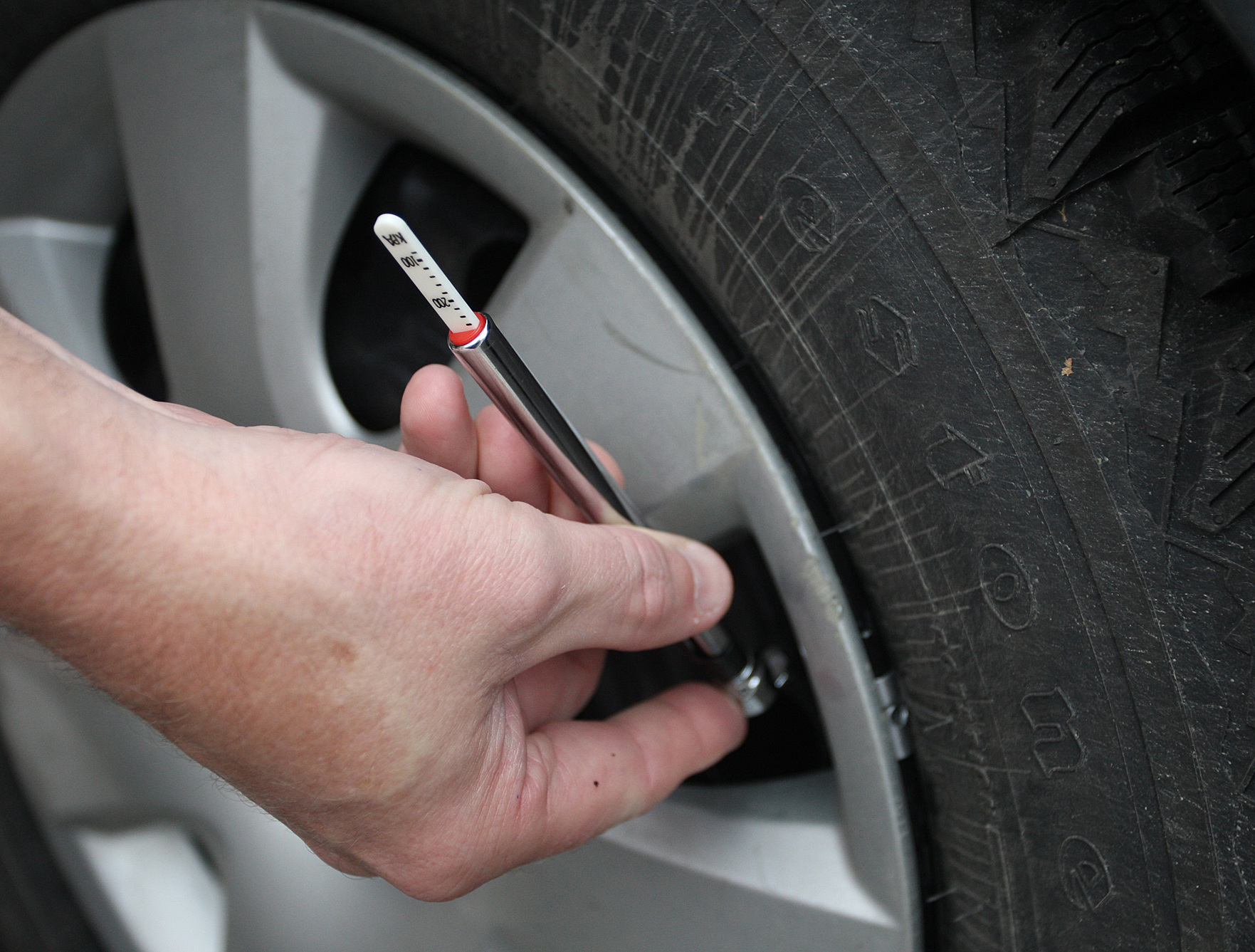
The leaves have turned their autumn hues of red and gold, and in many places most already have fallen from their limbs, signifying that colder weather is fast approaching.
And with the colder weather comes an increased need to perform preventative measures to your vehicle. October is Fall Car Care Month, which is the perfect time to make sure vehicles are running in tip-top condition.
Dan Soucy, owner of Soucy’s Auto Repair and Auto Electronics in Houlton, said maintaining proper tire pressure is one of the best things a driver can do not only to save wear and tear on tires, but also to increase gas mileage.
“I see a lot of bad tires on vehicles out there,” Soucy said.
When the temperature drops, air contracts, which can cause a drop in tire pressure. Recommended tire pressure varies depending on the size of the tire and the type of vehicle. The suggested PSI (pounds per square inch) can be located on the inside of the driver’s side door. Normal weather and cold weather recommended PSI are typically listed.
Many newer automobiles are now equipped with tire pressure monitors that can show exactly how much air is in the tire, while others have an indicator light to alert motorists when the pressure has become low.
Checking the wear on tires, especially for people who use all-season radials on a year-round basis, is crucial with snow on the way.
One tried and true method for determining if tires are too worn involves using a Lincoln head penny. Place the penny head down inside the tire groove. If you can see the top of Lincoln’s head, the treads are worn and the tire should be replaced.

Dan Soucy of Soucy’s Auto Repair and Auto Electronics in Houlton, said maintaining proper tire pressure is one of the best things a driver can do to not only save wear and tear on their tires, but also to increase gas mileage.
(Joseph Cyr)
Most tires also have a wear indicator, such as a hard rubber knob or bar inside the tread. When the tread has worn down to the point that the indicator is flush with the surface of the tire, it’s time to replace the tire.
To save wear on treads, Soucy recommends rotating tires every 5,000-6,000 miles. A good way to remember is to have the tires rotated on every other oil change.
Drivers also should have the vehicle’s battery tested at the local auto shop. If the battery is several years old, it might be time to replace it.
“What seems good now won’t be after our first cold snap,” Soucy said.
With long, snowy winters in Aroostook County, having wiper blades in good working order is another key. It makes sense, because if you can’t see out your windshield properly, there is increased danger of striking an object in the road. Any auto technician can advise on the appropriate type and size for your vehicle.
Another key check for vehicles in the fall is antifreeze, since it prevents freezing of key components in a vehicle. There are a number of ways to check the antifreeze, which is typically green, yellow or red in color. A good indicator that antifreeze needs to be replaced is if it is brown or has a pungent smell to it.
Mechanics can test the strength of the antifreeze with a device called a hydrometer, which entails sucking out a small amount of antifreeze and measuring its strength of protection by its color.
“Good fluids prevent premature wear in a multitude of things — transfer cases, front and rear differentials, transmission’s, and the engine as well,” he said. “Our harsh winter conditions are extremely hard on all vehicles. If people treat them with respect, they will return the favor and get you home.”
To help motorists follow a vehicle maintenance program, a free digital Car Care Guide can be found on the Car Care Council’s website at www.carcare.org/car-care-guide. The guide is available in English and Spanish, and includes information on service interval schedules, questions to ask a technician and tips to drive smart and save money.







